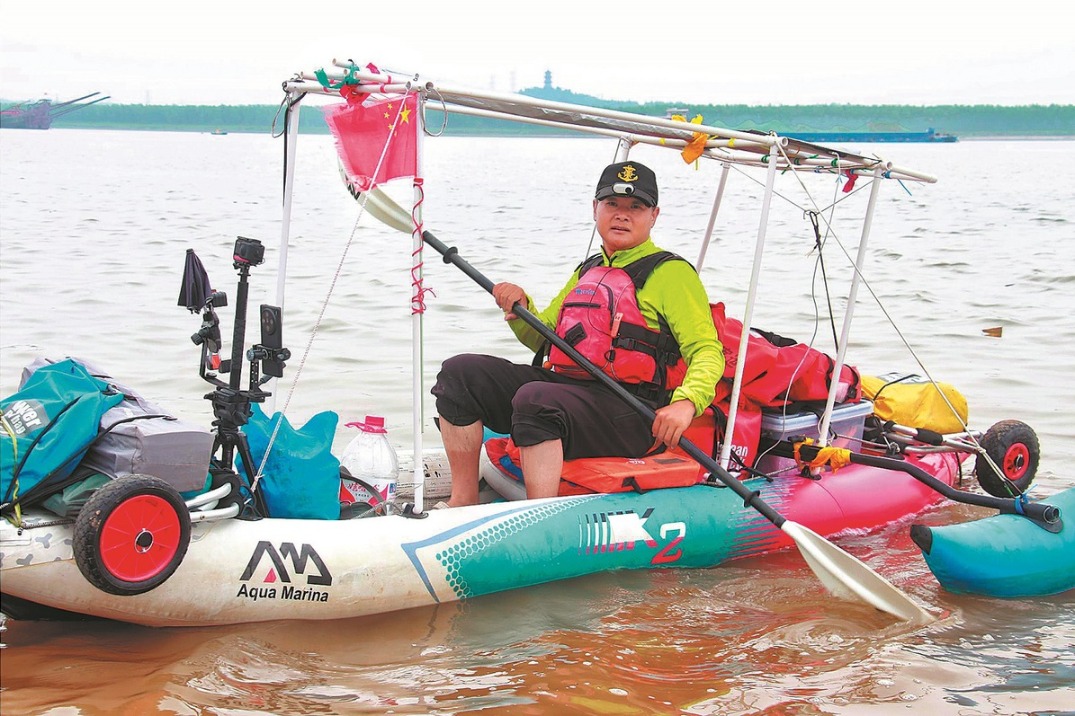World's first wind-powered commercial underwater data center project launched in Shanghai

SHANGHAI -- China has taken another bold step toward green computing infrastructure, with the official launch of the world's first commercial underwater data center (UDC) project powered by an offshore wind farm in Shanghai on Tuesday.
The project, initiated in Shanghai's coastal waters near the Lin-gang Special Area of China (Shanghai) Pilot Free Trade Zone, pioneers the co-location of renewable energy and computing infrastructure to address the surging global demand for low-carbon computing solutions.
The administrative committee of the Lin-gang Special Area of China (Shanghai) Pilot Free Trade Zone, Shanghai Lingang Special Area Investment Holding Group Co., Ltd., and Shanghai Hicloud Technology Co., Ltd., signed a tripartite cooperation agreement on Tuesday, marking the official launch of the project.
Chen Jinshan, head of the administrative committee of Lin-gang Special Area of China (Shanghai) Pilot Free Trade Zone, said that the Lingang project establishes a new model for UDCs, aspiring to become a benchmark for green computing power.
"This fusion of new-quality computing infrastructure and AI-ready scenarios aligns with our goal to strengthen Lingang's position as a global hub for cross-border data flows, AI computing, and intelligent connectivity," he said.
According to the agreement, Hicloud will put an initial investment of 1.6 billion yuan (about $222.7 million) to the two-phase project, known as the Shanghai Lingang UDC project, to establish a 24-megawatt (MW) underwater data cluster, integrating renewable energy, advanced cooling, and cross-border data capabilities, said Su Yang, general manager of Hicloud.
The facility, hosting groups of modular data units, will be cooled by sea water and powered by offshore wind energy, achieving sustainable energy use and zero carbon emissions, said Su.
The first phase, a 2.3 MW demonstration facility, has been designated by the National Development and Reform Commission as a national model for green, low-carbon innovation and is expected to be operational in September.
The second phase will scale capacity to 24 MW, achieving a power usage effectiveness (PUE) below 1.15 -- a benchmark for energy efficiency -- while sourcing over 90 percent of its power from offshore wind farms, he said.
The UDC's natural seawater cooling system reduces refrigeration energy consumption from 40-50 percent of the total power use to under 10 percent, slashing overall energy use by 30-40 percent compared to land-based counterparts, said Su.
Additionally, it will mitigate land usage, addressing the common issue of land resource scarcity faced by land-based deployments, he added.
UPGRADING FROM HAINAN EXPERIMENT
With the AI revolution accelerating, China aims to boost the country's aggregate computing power by more than 30 percent by 2025, according to a plan released by six government departments in October 2023. The plan also sets a target for China's total computing power to reach 300 EFLOPS by 2025.
The Lingang project design draws on Hicloud's UDC trial in Lingshui, South China's island province of Hainan, which is regarded as a milestone in China's quest to harness marine resources for next-generation computing power.
Put into operation in December 2022, the Hainan UDC hosts data modules at a depth of over 30 meters under the sea. Its intelligent computing cluster, with an existing computing capacity of over 675 PFlops, already rivals medium-sized land facilities, said Su.
While Microsoft's 2015 experimental "Project Natick" in Scotland demonstrated the feasibility of a subsea data center, Hainan's project distinguishes itself as the world's first commercial deployment, he added.
The cluster's current computing capacity equals 30,000 high-end gaming PCs working simultaneously, completing in one second what would take a standard computer a year to accomplish.
In addition, Su confirmed with Xinhua the UDC's stable performance since its launch, with zero server failures and no need for on-site maintenance.
"With all the work done in Hainan, it's comfortable to say that the Lingang project is an upgraded 2.0 version, because this time we have the wind farm to power the UDC, which makes it greener and more commercially competitive," Su told Xinhua.
The new UDC will anchor an industrial ecosystem that supports AI, 5G, the industrial Internet of Things (IoT), and cross-border e-commerce platforms, said Su.
Furthermore, it will explore data cross-border services for sectors including e-commerce, high-end shipping and international trade, he added.
- World's first wind-powered commercial underwater data center project launched in Shanghai
- Chinese, Israeli scientists develop new approach to make large-scale genetic editing
- China's AG600 aircraft greenlighted for mass production
- Hong Kong to release 2025 policy address ahead of schedule in Sept: HKSAR chief executive
- China set to build future workforce with new tech-centric college majors
- China unveils guidelines to deepen reforms in Shenzhen





































